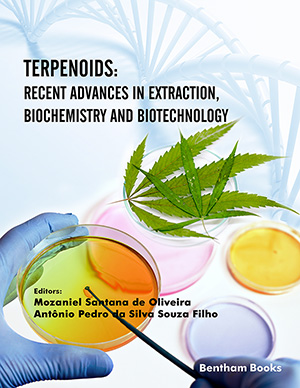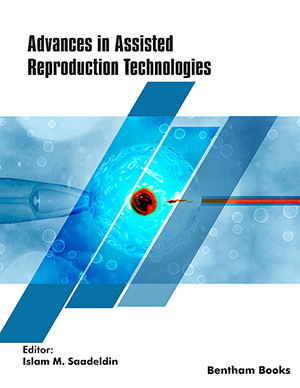
Abstract
Scientists and technicians have been innovative to develop experimental platforms in order to achieve functional weightless conditions in their Earth-bound laboratories. As a result, various experimental platforms are available in order to perform studies with molecules or single cells up to humans and to study gravity-related mechanisms.
These ground-based simulators of microgravity are not only tools to prepare spaceflight experiments, but they have been established as stand-alone facilities for gravitational research.
This review provides an overview of some of the most frequently used microgravity simulators, most of which are in use at DLR´s Institute of Aerospace Medicine at Cologne, Germany. Their individual capacities but also experimental limitations, especially regarding their range of applicability for biological specimens, are exemplarily reviewed here. Overall, it is necessary to compare data achieved by using simulators with the data obtained in real microgravity. Furthermore, it should be carefully considered which kind of simulation might be the optimum for a given model organism or cell.
Keywords: Space biology, gravitational biology, gravity, microgravity, clinostat, random positioning machine.
Current Biotechnology
Title:Simulation of Microgravity for Studies in Gravitational Biology: Principles, Devices and Applications
Volume: 2 Issue: 3
Author(s): Ralf Anken
Affiliation:
Keywords: Space biology, gravitational biology, gravity, microgravity, clinostat, random positioning machine.
Abstract: Scientists and technicians have been innovative to develop experimental platforms in order to achieve functional weightless conditions in their Earth-bound laboratories. As a result, various experimental platforms are available in order to perform studies with molecules or single cells up to humans and to study gravity-related mechanisms.
These ground-based simulators of microgravity are not only tools to prepare spaceflight experiments, but they have been established as stand-alone facilities for gravitational research.
This review provides an overview of some of the most frequently used microgravity simulators, most of which are in use at DLR´s Institute of Aerospace Medicine at Cologne, Germany. Their individual capacities but also experimental limitations, especially regarding their range of applicability for biological specimens, are exemplarily reviewed here. Overall, it is necessary to compare data achieved by using simulators with the data obtained in real microgravity. Furthermore, it should be carefully considered which kind of simulation might be the optimum for a given model organism or cell.
Export Options
About this article
Cite this article as:
Anken Ralf, Simulation of Microgravity for Studies in Gravitational Biology: Principles, Devices and Applications, Current Biotechnology 2013; 2 (3) . https://dx.doi.org/10.2174/22115501113029990012
| DOI https://dx.doi.org/10.2174/22115501113029990012 |
Print ISSN 2211-5501 |
| Publisher Name Bentham Science Publisher |
Online ISSN 2211-551X |
Call for Papers in Thematic Issues
Age Reversal using transient epigenetc reprogramming with the OSK Yamanaka Factors
Aging is a complex biological process characterized by a gradual deterioration of physiological functions and an increased vulnerability to disease. Recent advancements in the field of regenerative medicine have shown promising avenues for combating aging. Among these, partial epigenetic reprogramming, specifically utilizing the Yamanaka factors, has been shown to reverse ...read more
Bioinformatic Analysis of Regulated Cell Death in Chronic and Acute Inflammatory Diseases
In the intricate realm of inflammatory diseases, delving into the complexities surrounding regulated cell death emerges as an indispensable and forefront area of exploration. Understanding the intricacies of how cells are regulated to undergo death in inflammatory conditions not only represents a pivotal frontier in biomedical research but also holds ...read more
Feeding a vegan World
The Eat-Lancet Planetary diet recommends at least 2/3 plant and microbial sources in the food protein portion. Such diet is recommended against obesity, cancer and to limit global warming, and might get more and more incentives in the next years. We thus need massive amounts of Plant-based food, and the ...read more
Leveraging AI for personalized pediatric neurodevelopmental support
Personalized medicine in pediatrics is a moving target dedicated to finding the right treatment, at the right time, for each individual child in each stage of development. Child development is a highly personal process, unique to each individual, something which is even more apparent in the development of children with ...read more
Related Journals
 25
25
- Author Guidelines
- Graphical Abstracts
- Fabricating and Stating False Information
- Research Misconduct
- Post Publication Discussions and Corrections
- Publishing Ethics and Rectitude
- Increase Visibility of Your Article
- Archiving Policies
- Peer Review Workflow
- Order Your Article Before Print
- Promote Your Article
- Manuscript Transfer Facility
- Editorial Policies
- Allegations from Whistleblowers
- Announcements
Related Articles
-
A Pan-Cancer Review of <i>ALK</i> Mutations: Implications for Carcinogenesis and Therapy
Current Cancer Drug Targets Machine Learning and Artificial Intelligence: A Paradigm Shift in Big Data-Driven Drug Design and Discovery
Current Topics in Medicinal Chemistry Having a Promising Efficacy on Type II Diabetes, It’s Definitely a Green Tea Time
Current Medicinal Chemistry The INSL3-LGR8 Hormonal System in Humans: Testicular Descent, Cryptorchidism and Testicular Functions
Current Medicinal Chemistry - Immunology, Endocrine & Metabolic Agents Threes Company: Regulation of Cell Fate by Statins
Current Drug Targets - Cardiovascular & Hematological Disorders Anticancer Effects of the Organosilicon Multidrug Resistance Modulator SILA 421
Anti-Cancer Agents in Medicinal Chemistry Novel Anticancer Targets and Drug Discovery in Post Genomic Age
Current Medicinal Chemistry - Anti-Cancer Agents Chemical and Radiochemical Considerations in Radiolabeling with α-Emitting Radionuclides
Current Radiopharmaceuticals Cytochrome P450 in the Brain ; A Review
Current Drug Metabolism Target-based Anti-angiogenic Therapy in Breast Cancer
Current Pharmaceutical Design Oxocarbon Acids and their Derivatives in Biological and Medicinal Chemistry
Current Medicinal Chemistry Identification of Prognostic Biomarkers in Papillary Thyroid Cancer and Developing Non-Invasive Diagnostic Models Through Integrated Bioinformatics Analysis
MicroRNA NOB1: A Potential Biomarker or Target in Cancer
Current Drug Targets Polyethylenimine-based Formulations for Delivery of Oligonucleotides
Current Medicinal Chemistry Peroxisome Proliferator-Activated Receptor ?? (PPAR??) and Atherosclerosis
Current Drug Targets - Cardiovascular & Hematological Disorders Imaging Studies in Hypercalcemia
Current Medicinal Chemistry Calcium Metabolism & Hypercalcemia in Adults
Current Medicinal Chemistry Anti-Cancer Therapy: Targeting the Mevalonate Pathway
Current Cancer Drug Targets An Overview of Partial Synthesis and Transformations of Secosteroids
Current Organic Chemistry Construction of an Expression Classifier Based on an Immune-related Ten-gene Panel for Rapid Diagnosis of Papillary Thyroid Carcinoma Risks
Current Bioinformatics





















